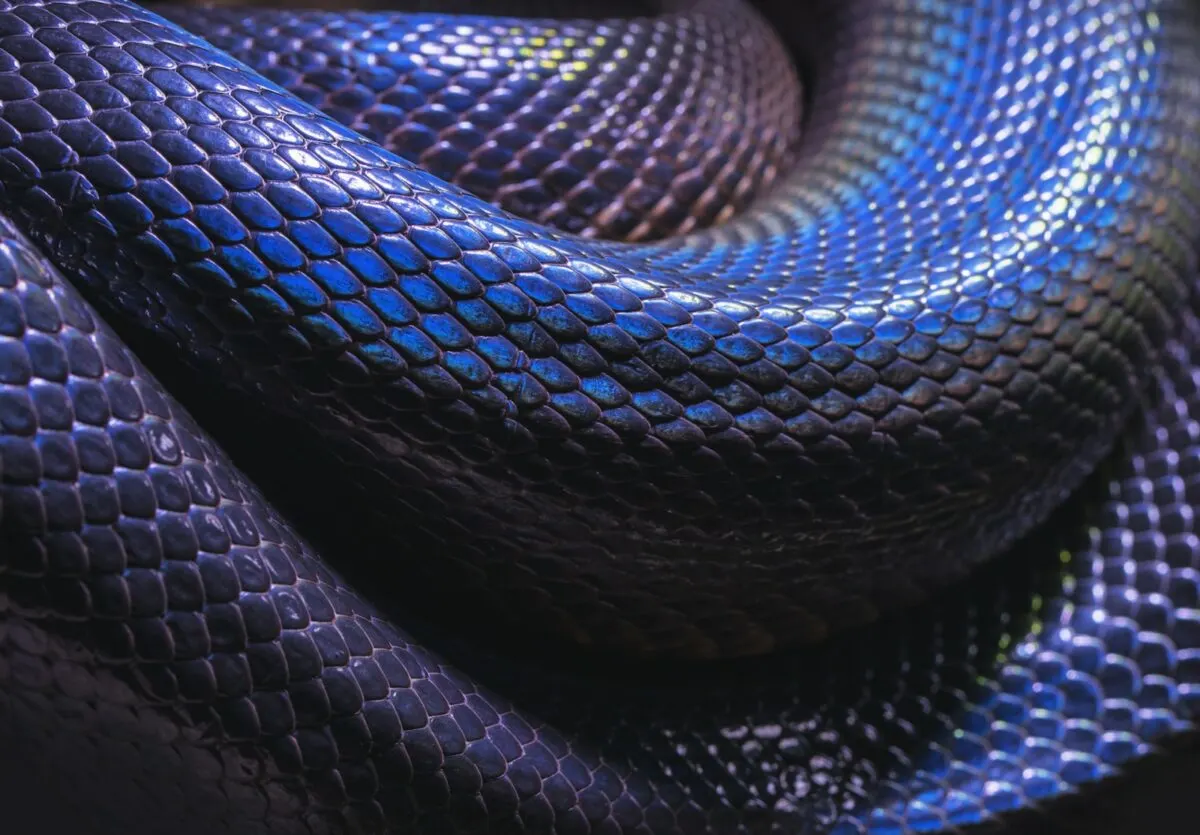Have you ever heard about a flat yet mysterious creature that stirs away in a wavy motion, flashes like a precious gemstone, and bites by injecting a shot of venom? Of course, we are talking about purple snakes.

Purple snakes are a particular category that snake lovers admire for their flashy purple color. Snakes are the most common reptiles, known for their legless and slender body that can easily twist and turn, moving swiftly despite being legless. Some possess potent venom that can take any adult’s life within a few minutes. However, not all types of snakes are venomous.
Purple snakes are rare and well-loved creatures among snake lovers due to their unique color. Note that they are further categorized into different species based on differentiation in their habitat and scientific classification.
This article covers the most common species of purple snakes, pinpointing their habitat, unique features, and much more. Also, many people want to keep them as pets but are afraid of their venomous bites. Stick with us to unravel this unique-colored snake and get to know whether you can keep them as a pet or not.
An Overview
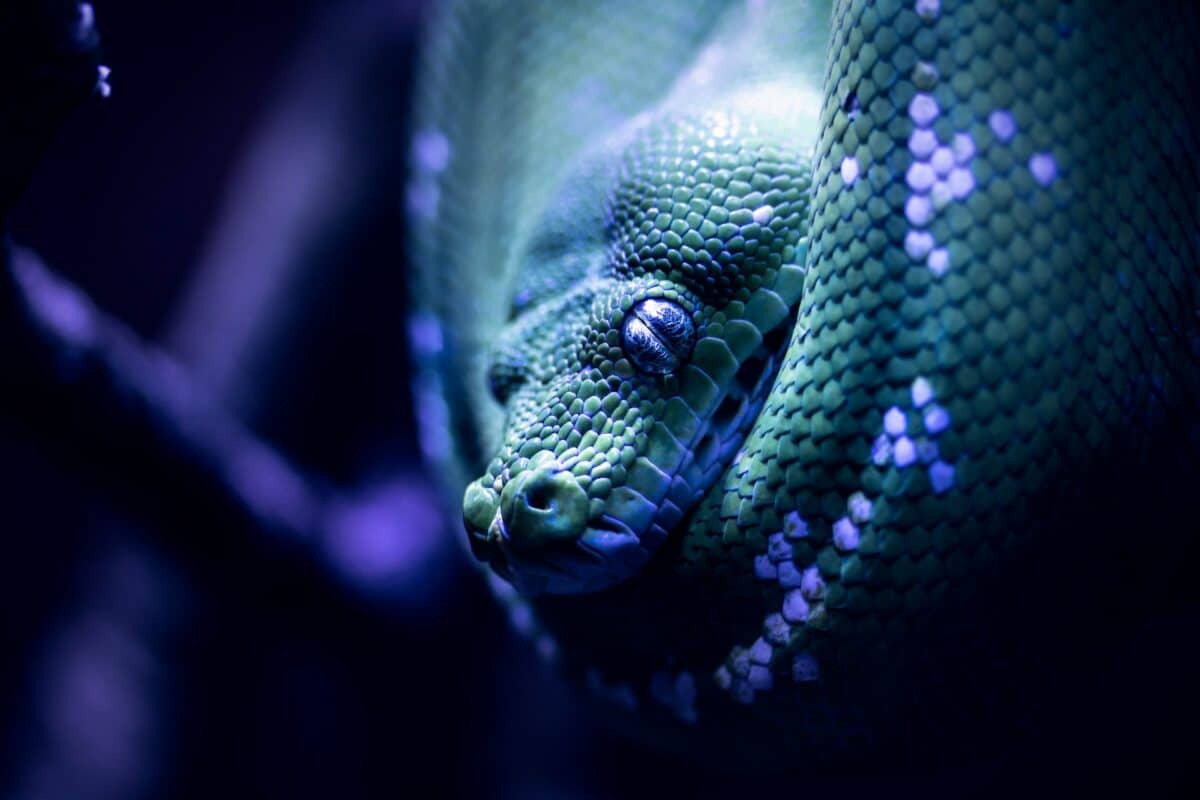
The most intriguing feature of these snakes is the flashy royal purple color which makes them the much-loved creature despite their deadly venom. Luckily though, not all species are venomous.
Typically, these snakes are small to medium-sized with slender and sinuous bodies pierced with yellow eyes. The yellow eyes on their flashy purple-colored body create a fantastic contrast, making them even more eye-catching. Also, their unique behavior, such as communal denning habits and mating balls during the breeding season, are equal causes for fascination.
Moreover, this unique-colored snake does not only reside in jungles, but you can find them in different habitats, such as forests, grasslands, wetlands, etc. Just like their habitat, their food is not limited to one prey. Their diet typically consists of insects, worms, and small mammals.
Naturally, all species of purple snakes belong to the class Reptilia, of the order Squamata, and suborder Serpentes (as do all snakes.) However, their families and genera vary depending on their characteristics and evolutionary relationships.
Most Common Types of Purple Snakes
As mentioned earlier, they are subcategorized into several species based on their characteristics, temperament, and habitat differences.
However, each species belongs to the same order of the same class, but their family may vary. Below we have mentioned the most common purple snake species, their food preferences, habitat, and more.
#1 Purple Garter Snake – Thamnophis Sirtalis
One of the most common species of purple snakes is the Purple Garter Snake, scientifically known as Thamnophis Sirtalis. This species belongs to the order Squamata, suborder Serpentes, of the family Colubridae and genus Thamnophis.
As a typical feature of purple snakes, they are known for their iridescent purple or blue scales, making them fascinating creatures. In addition, another exciting characteristic is their communal denning habits and mating balls during the breeding season.
Notably, this particular species is non-venomous and feeds on various prey such as worms, insects, raccoons, skunks, and small fish. They are commonly found in North America in various habitats, including woodlands, fields, and marshes.
#2 Mangrove Pit Viper – Trimeresurus Purpureomaculatus
Another unique purple snake species is Purple Pit Viper, scientifically known as the Trimeresurus Purpureomaculatus. Earlier, they were scientifically known as Cryptelytrops Purpureomaculatus. This particular species is found in Southeast Asia and scientifically belongs to the family Viperidae and the genus Trimeresurus.
On average, the size of these snakes is around 3-4 feet which means they are a relatively small species. The distinctive feature of these snakes is the unique purple coloration on its head. Moreover, they are a species of venomous snakes that can take a human life through one bite.
In addition, they typically use their venom to catch birds, lizards, and other small animals. Also, it is noteworthy that mangrove pit vipers are arboreal and mostly present in a wide range of tropical and subtropical rainforests.
#3 Purple Glossy Snake – Arizona Elegans
Purple Glossy Snake, scientifically known as Arizona Elegans, is another common type of purple snake. They belong to the same order Squamata, suborder Serpentes of the class Reptilia. However, their family differs from the previously mentioned species, i.e., Colubridae, and their genus is Arizona.
These snakes are typically found in the southwestern United States and northern Mexico. Their most common habitats include deserts, scrublands, and rocky canyons. Just like other purple snakes, they are mainly known for their iridescent purple or blue scales and flashy body. Moreover, likewise to Purple Garter Snakes, they are non-venomous.
Besides, their food preferences include small mammals, lizards, and birds.
#4 Common Purple-Glossed Snake – Amblyodipsas polylepis
Another popular species of purple snake is the Common Purple Glossed snake, also known as Gewone Persglansslang. Their scientific name is Amblyodipsas Polylepis, and they belong to the Atractaspididae family and the Amblyodipsas genus.
Notably, the common purple-glossed snake is a species of venomous rear-fanged snake that mainly ranges around 24 inches in length but may often exceed the 40 inches mark. This particular type of snake is known to have dorsal scales on its smooth body without pits. Moreover, they are known to have five teeth which gradually increase in size as they age.
It is vital to note that they are mildly venomous, which means their bite can be dangerous to humans but won’t kill you instantly.
They are mainly distributed in Southern African regions and are generally found in excavated soil. Moreover, they are often confused with several other small shiny black snakes, such as the venomous stiletto snakes.
The species is known for its unique response to threats. For instance, they hide their head under their body and try to protect themselves by moving their tail tip to distract the attacker. A minor change in the environment can easily confuse these snakes. Overall, they are docile and very rarely attempt to bite.
#5 Katanga Purple-Glossed Snake – Lamprophiidae
The rear fanged Katanga Purple Glossed Snake belongs to the Lamprophiidae family and is usually found in different parts of Africa. This species of snake is further divided into two subspecies, namely Amblyodipsas katangensis ionidesi and Amblyodipsas katangensis katangensis.
Katanga purple-glossed snakes are venomous in nature and have a black or brown skin base with a purple gloss. Typically nocturnal, this snake species hunts reptiles, mammals, birds, and even other members belonging to the snake family.
Why Are They Purple?
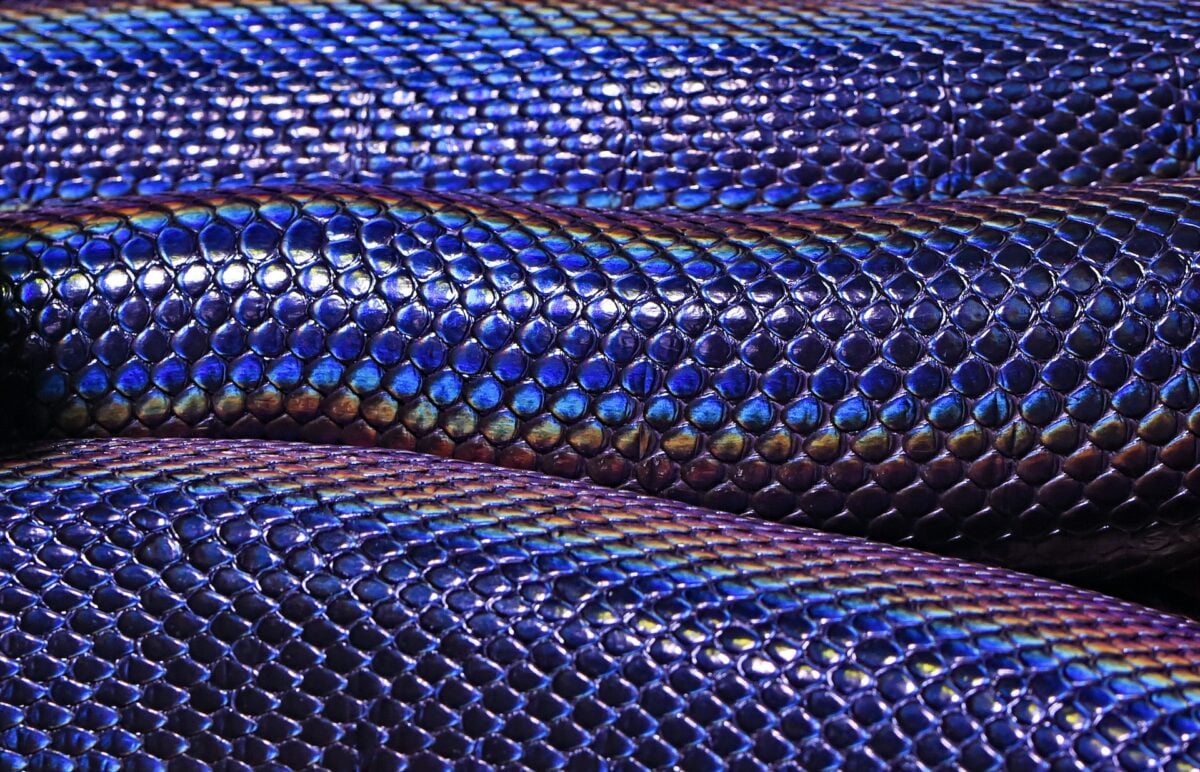
Many people are often confused by purple snakes’ coloration and iridescent scaling. While this uniqueness makes people wonder how they got this flashy color, it also captivates them.
There is no doubt that the purple color of snakes makes them look distinctive and attractive. But the question is how they receive this purple color.
Well, snakes can be found in a variety of colors. However, the most common are black, brown, and red. This color variation is caused by their chromatophore skin cells. Likewise, the unique coloration of purple snakes results from the interaction of these skin cells, often camouflaging a totally different hue.
In a nutshell, their coloration results from the presence of pigments and structural coloration in the scales of purple snakes. This unique coloration can range from a deep, rich shade to a more iridescent blue or purple.
Can Purple Snakes Make Good Pets?
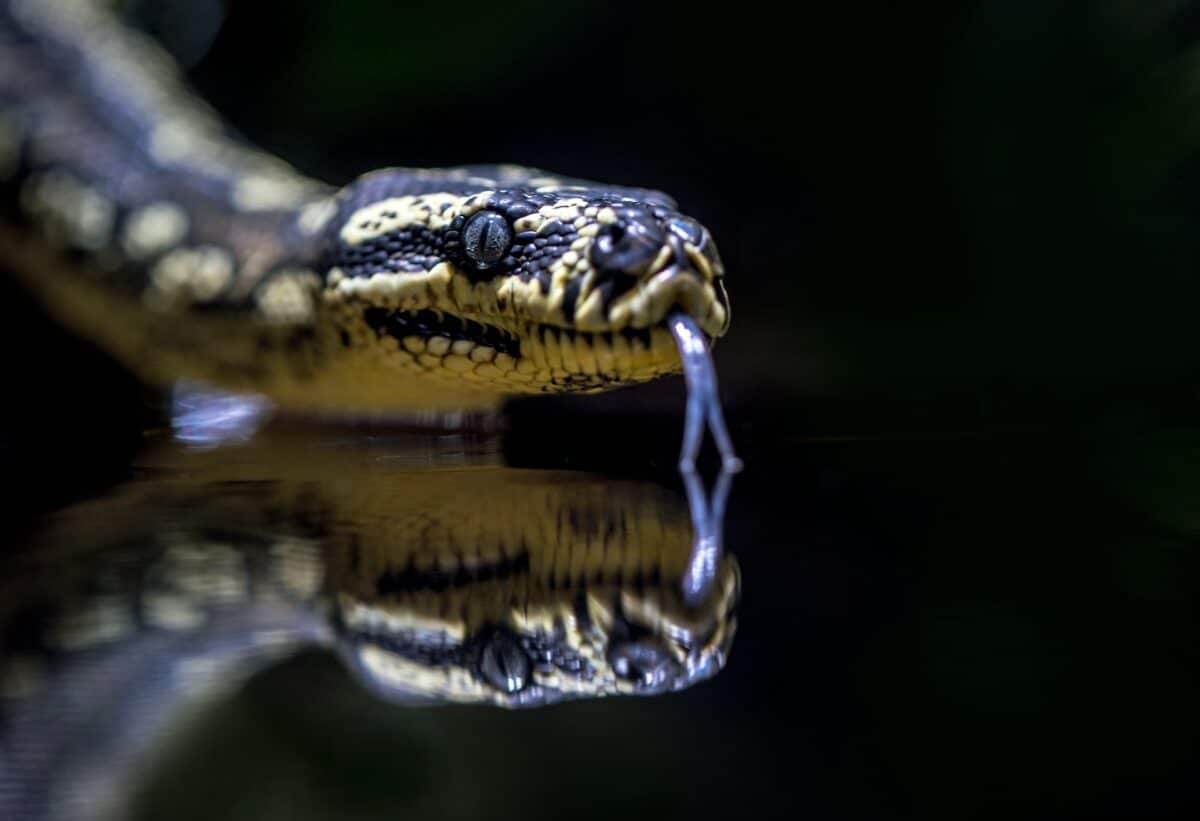
The honest answer to this question is that it depends on their species. As we already discussed, some species are venomous, whereas some are nonvenomous. Besides, their behavior, food preferences, and care requirements are also crucial factors in this regard.
If you are considering keeping one as a pet, it must be due to its vivid coloration and scaling, making it an attractive animal. The unique coloration of these snakes could melt anyone’s heart, no matter how much they dislike reptiles.
In short, whether keeping them as pets is a good idea or not can only be judged on a case-by-case basis. Some species can make good pets, while others may not be suitable due to their venomous characteristics, size, temperament, or care requirements.
Therefore, it is vital to research the specific species you want to keep and get an authorized veterinarian or a reptile expert’s opinion about that species.
Are Purple Snakes Threatened?
Overall, they are not facing extinction. However, the status may vary depending on their species. Some species of purple snakes are in a vulnerable position and deemed endangered.
Notably, multiple factors contribute to their extinction, such as habitat loss, overcollection for the pet trade, hunting, and the use of pesticides.
For instance, the Purple Pit Viper is considered vulnerable due to habitat loss and over-collection for the pet trade.
Exciting Facts About Purple Snakes
In addition to their unique coloration, a few exciting facts make them distinctive from other snakes. Below are a few interesting facts about purple snakes.
- The iridescent scales on their bodies appear purple or blue in the sunlight, which makes them wondrous creatures of the animal kingdom.
- As mentioned earlier, the mangrove pit viper has a distinctive purple coloration on its head, which is meant to act as a warning sign to predators.
- The communal denning habits of purple garter snakes help gather a large number of snakes together in a single hibernating spot.
- Notably, the purple garter snake is also known for its ‘mating balls,’ where many males gather around a single female during the breeding season.
- The purple pit viper is an arboreal species that uses its venom to catch birds, lizards, and other small animals.
- Purple snakes can adapt to different environments, including tropical regions, rainforests, deserts, and scrublands.
- Some species are venomous, whereas some are non-venomous.
Frequently Asked Questions
Not all purple snakes are venomous. For instance, the Purple Garter Snake is non-venomous, whereas the Purple Pit Viper is venomous.
Purple snakes are subdivided into several categories of species on the basis of differences in their temperament, habitat, food preferences, and, most importantly, scientific division.
Therefore, each species feeds on a variety of prey, primarily pertaining to lizards, birds, worms, insects, small fish, and other small mammals.
They are a particular category of legless reptiles that are rare. Due to their distinctive and attractive coloration, they are in high demand among snake lovers.
Summary
| Key Points |
| Purple Snakes flash like a precious gemstone due to its flashy and unique coloration. |
| Purple snakes are subdivided into several species, based on the differences in their temperament, habitat, food preferences, and scientific division. |
| The purple coloration of these snakes results from the presence of pigments and structural coloration in their scales. |
| If you are considering keeping a purple snake as a pet, you need to consider certain parameters, discussed in the article, but most importantly consult with a reptile expert before adopting one. |
The Final Word
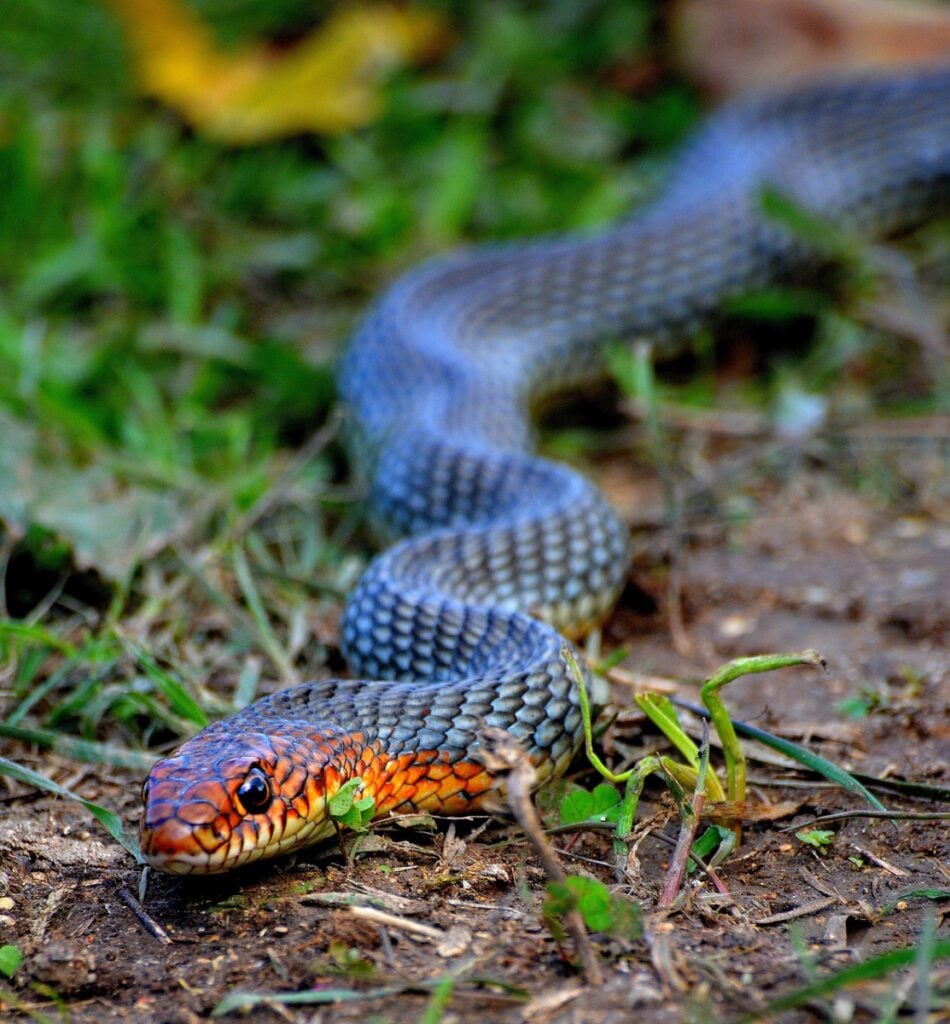
To conclude, purple snakes are an exciting and unique group of reptiles known for their distinctive purple coloration and flashy scales on their slender bodies. However, this broad type of snake is further categorized into different species based on considerable differences in temperament, genus, scientific family, and habitat.
Typically, they are adapted to different environments and can be found in various habitats, including forests, deserts, scrublands, etc. Besides their habitat differences, their behavior and temperament may also vary. It means that their unique behaviors also set them apart from other snake species.
Most importantly, some species are non-venomous, some are moderately venomous, and some are extremely venomous. Overall, purple snakes are rare yet not classified as threatened. However, the population of some species started decreasing to a considerable number due to human activities.
Therefore, some species of these unique-colored snakes are expected to be at risk of extinction shortly unless proper conservation measures are put in place.
Thank you for reading this article! Do you feel like diving even deeper into the world of reptiles? Take a look at our post on Getting To Know Different Types of Lizards.
Join our Forum for free today!


